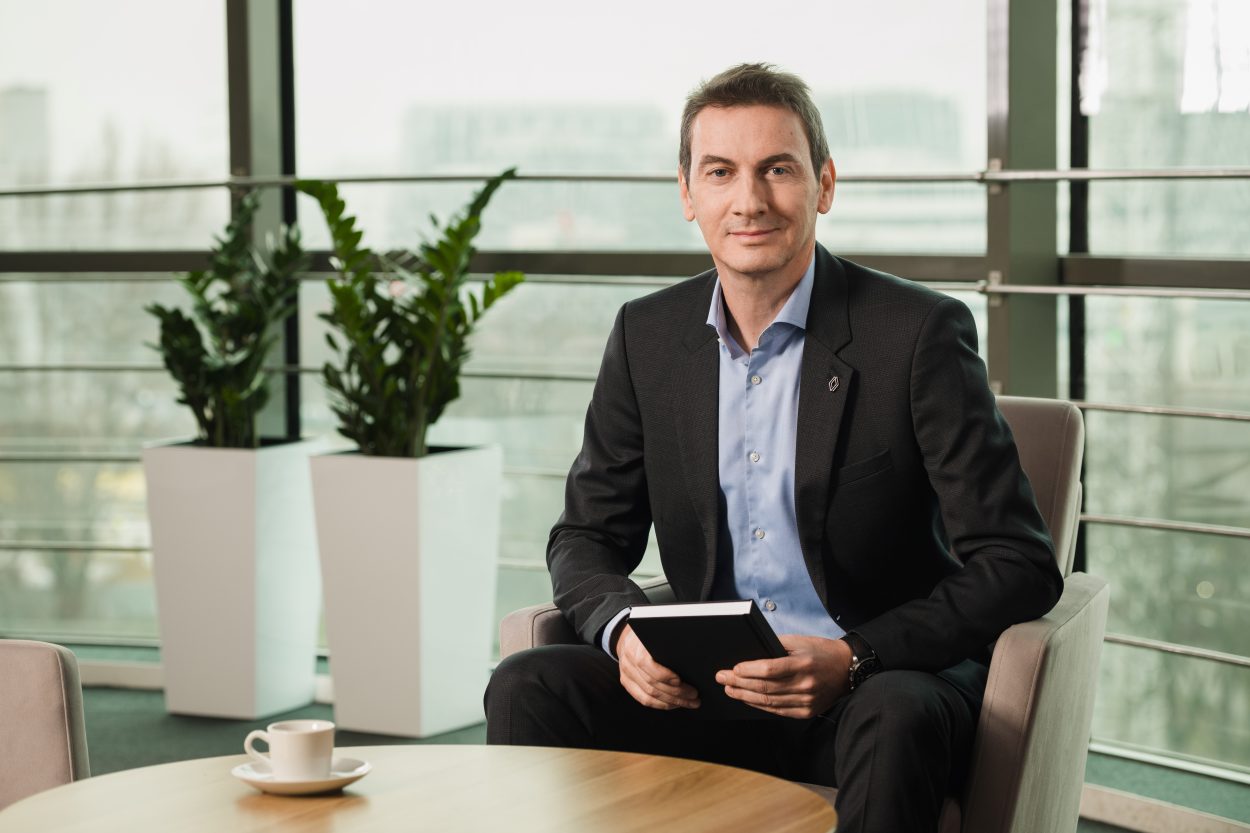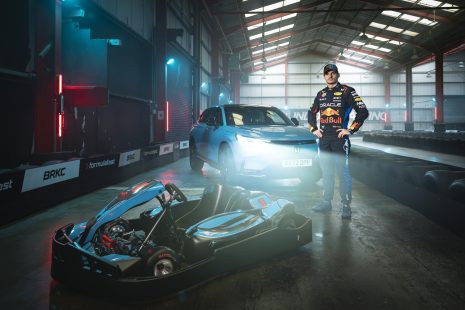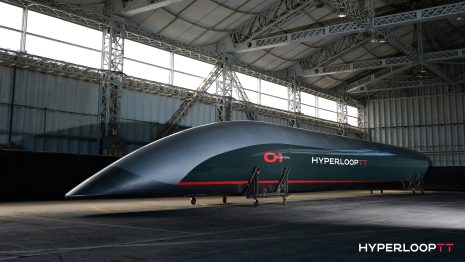
Interview with Fabien Goulmy, CEO Renault Eastern Europe
You have been a long-standing employee at Renault. Since the new President took office, the Renault Group has experienced a significant upturn.
He’s not so new now, having been with us for over 3 years. He is an absolute leader in sales and marketing, driven by a passion for cars. This is incredibly valuable, especially for the sales and marketing teams, as it diverges from a purely financial or industrial approach. The automotive industry, heavily reliant on production processes, engineering, research and development, and finance, also requires a clear vision.
This vision focuses on creating cars that excite people, serving as the best way to strengthen our brand and performance. Luca de Meo has delved into Renault’s history, using this heritage to steer a new direction for Renault. This new direction not only aligns with the brand’s historic image but also integrates new technologies and capitalizes on the industry’s major transformations.
A prime example is the R5, embodying the essence of Renault’s deep-rooted history—drawing inspiration from the original R5—while incorporating significant technological advancements. This includes features like an avatar in artificial intelligence and reverse charging batteries, offering the perfect blend of rich heritage and futuristic technology, presenting significant benefits to the customer.
In terms of buying a new car, how important is heritage to a customer? You can’t sell the R5 solely on its excellent heritage. Everyone looks at the whole car that’s on sale today.
For some individuals, heritage is significant, especially in countries where the R5 was a big seller. It’s not the same in all countries, including those I’m responsible for. But you’re correct; it’s not enough. Heritage is one aspect; it contributes to the storytelling. Even for those unfamiliar with the previous model, we can craft a narrative, something newer brands might lack due to their recent arrival on the market.
We can leverage nostalgia, for instance, drawing on positive memories. It’s a part of what makes a car successful but not the whole story. The second aspect is the car’s design. Even for those who aren’t aware of the original R5, its design stands out as fresh. While it might not appeal to everyone, it’s distinctive and well-conceived, and we believe the design itself will help sell the car. The third aspect is the technology we incorporate.
For example, considerLuc Julia, who previously worked at Hewlett Packard, Apple, and Samsung Electronics in the United States and was recruited by Renault as a leading specialist in artificial intelligence. He emphasized that we would integrate AI into our cars, but it would be non-invasive. The goal is to use AI to assist the driver in a way that’s not overly intrusive, offering services on demand in a manner that enhances, not complicates, the driving experience.
So, these three elements—heritage, design, and technology—are crucial. Each contributes to the car’s appeal in its way, but they’re part of a larger equation. Heritage is valuable for storytelling, the design for its fresh appeal, and the technology for its practical benefits. When it comes to electric cars, modern features like good handling, autonomy, and so on are expected.
Lastly, the technology you offer, like the ability for the car’s battery to reverse charge and power household needs, can be particularly appealing to some customers. All these factors combined will, I hope, contribute to the car’s success, using the R5 as an example.
In the last interview, you mentioned that your goal was to achieve a 10% market share in the Baltics.
Now, it remains my objective. However, we’re currently focusing more on reaching a 6% market share. Therefore, there’s still room for progress, which is quite exciting.
Reflecting on your sales predictions two years ago for last year, did your expectations for 2023 meet the reality?
Certainly, I had hoped we would achieve more. As I mentioned, aiming for a 10% market share is ambitious, and building towards that ambition takes time. However, I remain confident due to Renault’s strong upcoming product lineup.
We have two main pillars: Light Commercial Vehicles (LCV) and Passenger Cars (PC). Our LCV performance remained robust, maintaining our leading position, except in certain areas where we faced stiff competition from pickups, which impacted our top rank last year. Nonetheless, we continue to be strong contenders in the LCV market.
On the PC front, we encountered some challenges that prevented us from reaching the market share I anticipated last year. Delays in the arrival of new models, particularly the hybrid versions of the AUSTRAL, ARKANA and CAPTUR, contributed to this. A six-month delay in the launch of these key models significantly affected our performance.
However, I’m optimistic about the future. With the introduction of new models like the ESPACE, AUSTRAL (including HEV versions), and ARKANA, we expect to see an improvement in our market share across the three countries in 2024.
And the new Scenic is coming up too, right?
Absolutely, the SCENIC will undoubtedly be a highlight. I refer to it as the perfect electric family car. While the MEGANE E-TECH has been successful, winning Car of the Year in Poland, its sport-oriented design limits its appeal to families due to the reduced space in the second row.
The SCENIC, on the other hand, shares the same attractive design and technology, such as the open-air link, but offers significantly more room, making it ideal for families. We anticipate that the SCENIC will substantially boost our electric car sales.
This year, will internal combustion engines (ICE) still dominate, or will the SCENIC become more prevalent?
Our capabilities with electric vehicles are currently limited. Even if we introduce the best electric cars on the market, the overall market size for electric vehicles is relatively small and grows slowly. In some countries, we’ve even seen a stagnation in the electric car market, influenced by factors such as infrastructure development and the competitive pricing of electricity.
We’re dependent on the growth of the electric market, which is influenced by numerous factors, including each country’s ability to develop infrastructure, produce affordable and clean electricity, and provide subsidies. It’s challenging to predict the pace of growth due to these variables. At Renault, our strategy is to create attractive electric vehicles to gently push market growth. However, this year, models like the new CAPTUR, which cater to a broader market segment, will likely be a more significant growth driver. The new CAPTUR, available in ICE and HEV versions, is expected to have a more substantial impact on sales due to its broader market appeal.
Additionally, we’re excited about the launch of RAFALE, a new flagship model that will contribute to our brand image and help boost sales in the C and D segments. This approach aligns with our strategy to maintain strength in the B segment while expanding our presence in the higher segments with quality products. Despite the focus on electric vehicles, we continue to invest in traditional engines (ICE and HEV) to meet diverse customer needs.
Recently, there’s been talk among car companies that electric vehicles might not be the sole path forward, considering the advancements in synthetic fuels and the success of hybrids. What’s Renault Group’s stance on this?
The future of the automotive market is difficult to predict due to various external factors and the continuous evolution of technology. While electric vehicles are a significant focus, we acknowledge that not everyone is ready to make the switch, possibly until they have no other choice. This reality makes hybrid technology particularly appealing as it offers the best of both worlds: more autonomy with lower CO2 emissions. Renault is heavily investing in hybrid vehicles, with upcoming models like SYMBIOZ highlighting our commitment to this technology.
Moreover, synthetic fuels represent another area of interest. Renault is actively exploring this avenue, along with continued investments in improving the efficiency of ICE and hybrid engines. Our dedicated entity, Ampere, focuses on developing electric vehicles, navigation systems, and artificial intelligence, while also enhancing traditional engine technologies. This diversified approach ensures we’re not putting all our eggs in one basket, allowing us to meet a broad range of customer needs and preferences across different markets.
In Finland, some insurance companies have been reluctant to cover very expensive electric cars due to the high costs associated with replacing a battery pack after an accident, sometimes nearing the cost of a new car. Do you see such problems affecting Renault’s lineup?
I am aware of these concerns. However, I believe the market will adjust over time. As electric vehicles become more common, insurance companies will likely find ways to mitigate and reduce costs. Additionally, as the industry evolves, the cost of batteries is expected to decrease, making repairs more manageable.
While I’ve heard questions about insurance being a potential barrier for customers interested in electric vehicles, we don’t see it as a significant deterrent at the moment. The decision to purchase an electric car does not seem to be heavily influenced by insurance factors.
Certainly, insurance companies may express concerns about the high costs of repairs, especially battery replacements, but I anticipate they will adapt to these challenges. The industry’s overall trajectory suggests that solutions to these issues will emerge, making electric vehicles an increasingly practical and appealing option for consumers.
Are you collaborating with governments or authorities to facilitate the sale of electric vehicles to clients, such as through discounts or incentives?
Our ability to influence government policies is limited, but in some countries, customers can benefit from subsidies aimed at encouraging the transition to electric vehicles. For instance, in France, there’s an attractive leasing offer for individuals with modest incomes, allowing them to access electric vehicles for as low as 100 euros a month. This initiative has seen significant success, highlighting the demand for electric vehicles among those who might find them otherwise unaffordable due to their higher initial cost and monthly budget constraints.
Electric vehicles offer considerable potential, especially in regions where fuel costs are high, by providing a more affordable monthly usage cost. We anticipate that the overall costs associated with electric vehicles, including insurance, will decrease as battery production increases locally, reducing the price of battery replacements.
Looking ahead, we see a promising opportunity to lower costs even further. The introduction of new, more affordable models, such as the upcoming Twingo, will make electric vehicles more accessible. Initially, new technologies often cater to early adopters and come with higher prices, but as the market expands, prices tend to decrease, and more straightforward, affordable products become available. We’re just at the beginning of this journey with electric vehicles.
Can you share your business plans for this year? What are your goals?
Our primary goal is to regain our number one position in the Light Commercial Vehicle (LCV) market across the Baltic countries, where we are strong but not yet leading everywhere. A significant part of our strategy involves introducing the new MASTER, which will also offer an electric version—the MASTER Aerovan . This is particularly exciting as it represents our strongest foray into the electric LCV market to date. Our customers already trust the quality and superiority of our LCV and Fuel Cell Vehicle (FCV) offerings, but now we aim to enhance our performance in the Passenger Cars (PC) segment with a strengthened lineup. While achieving a 10% market share in the Baltics immediately may not be feasible, we aim to continue growing towards this ambition in the future.
Regarding electric LCVs, how readily do you think clients will adopt these vehicles?
Even though the new Master will offer excellent autonomy— 460 km (WLTP) —the market for electric LCVs is still somewhat niche, primarily catering to delivery companies with large fleets that can partially transition to electric vehicles. These companies will be our initial target customers. Individual buyers might also be interested, depending on their specific needs for the Master. However, electric vans are not suited for long-distance, intensive use, a segment where the Master excels with internal combustion engines. Our focus will remain on leveraging the strengths of each model to meet the diverse needs of our customers effectively.
In Tallinn, I’ve observed some smaller, self-driving delivery vehicles. Is Renault considering this market segment?
It seems the industry has somewhat shifted its perspective on fully autonomous driving, recognizing the challenges in achieving complete autonomy. Renault acknowledges these limitations and, while our ambitions might not be centered on dominating this particular field, we’re not dismissing it entirely. The focus, however, is gradually shifting towards electric Light Commercial Vehicles (LCVs) for urban last-mile delivery. Models like the MASTER, TRAFIC and KANGOO, which already have electric variants, are poised to play a significant role. In urban environments, it’s likely that the future will predominantly feature electric LCVs. So, there is definitely potential in this area for the future.
Regarding Mobilize’s operations in Estonia and the Baltics, do you have any plans for share and financing?
In terms of financing, we are keen on enhancing our competitiveness in the Baltic countries with Mobilize. Although we have established some partnerships, I believe there is room for improvement to achieve greater efficiency in our financial services. This is a priority for us, and we are working closely with Mobilize’s headquarters in Paris to enhance our financial service offerings and competitiveness.
Furthermore, Mobilize isn’t just about financing; it also offers innovative solutions for car dealerships, allowing them to rent out cars. This concept, which we are currently developing in Poland, resembles car-sharing apps but is tailored for dealership customers. This year, we will introduce a system where customers can use an app to rent a car from a dealership for any duration, accessible 24/7. This service is especially convenient for customers requiring a vehicle while theirs is under maintenance or repair, without any cost for them as it will be covered by insurance or similar arrangements.
This initiative also presents a business opportunity for dealerships. They can place cars at strategic locations, like distribution centers, for customers to rent via the Mobilize app. The primary requirement is that cars must be returned to their original location. Although this isn’t a full car-sharing service, it simplifies the process through an app, enabling online payments. We’re starting with a pilot in Poland, with 500 courtesy cars to gauge its success before potentially expanding. Our goal is to provide our dealers with opportunities to grow their services, benefiting their business and enhancing customer satisfaction and loyalty by offering more services.




